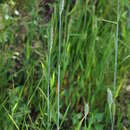Triticale (X
Triticosecale) was created by crossing wheat (
Triticum) (as the female parent) with Cereal Rye (
Secale cereale) (as the male parent), combining the qualities of wheat with the hardiness of Rye. The cross has occurred naturally and a range of different types of hybrid lines have been derived by plant breeders at various times since the late 19th century. In the latter part of the 20th century, triticale was transformed from a scientific novelty to a viable crop of significant commercial importance. According to 2010 data from the UN Food and Agriculture organization's
FAOSTAT website, Poland, Germany, France, and Belarus are the world's largest triticale producers, although there is also significant production in many other countries, including Australia, Hungary, China, Russia, and Lithuania, among others. Relative to wheat, triticale has been found to have a generally higher protein content, but lower
gluten content. To achieve consumer acceptance of triticale bread or other food products, the milling and baking technologies currently used for wheat or rye would have to be modified. Despite triticale’s general suitability as a food grain for humans and decades of breeding and research, it has not yet been transformed into a marketable food crop in developed or developing countries. In contrast, triticale is now established as a high value feed grain, although it remains limited largely to marginal growing conditions and on-farm consumption as animal feed. For animals, in fact, it may be superior to the more traditional grains such as
wheat,
barley, and
oats as a ruminant feed due to higher starch digestibility. In Europe, where the intensive cultivation of
maize as a forage crop leads to serious environmental problems, triticale may hold promise for whole-crop
silage. Oettler (2005) suggested that triticale could be a good model for basic research on genome adaptation, genome regulation, and functional genomics. (Vaughan and Geissler 1997; Oettler et al. 2005 and refrences therein)

